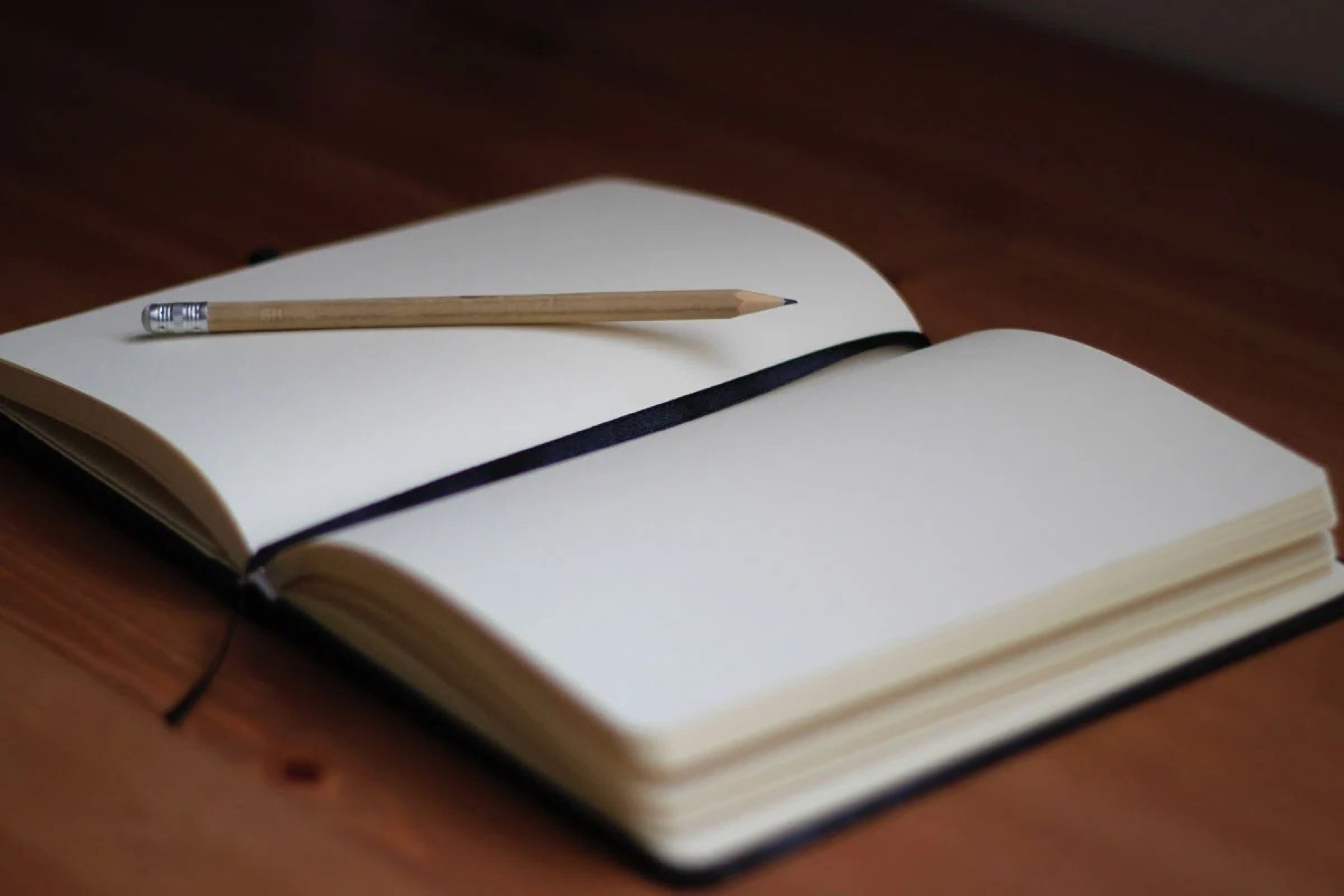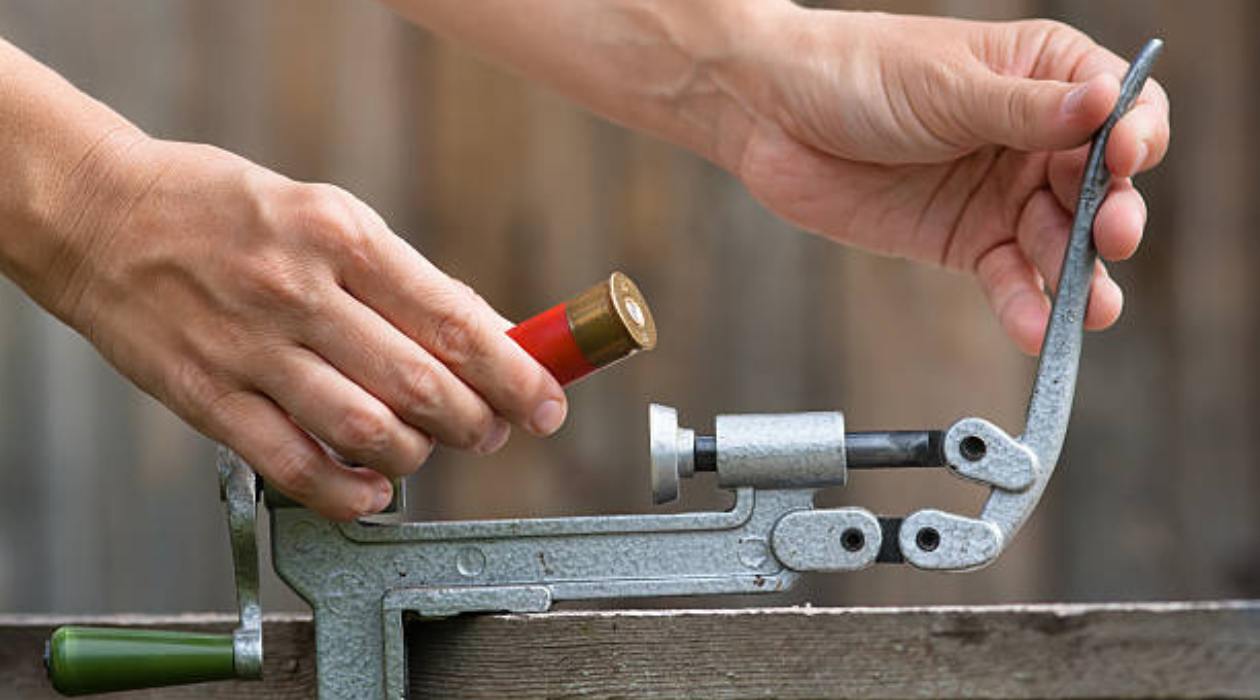Home>Renovation & DIY>DIY Projects & Ideas>How To Organize A Bullet Journal


DIY Projects & Ideas
How To Organize A Bullet Journal
Published: March 2, 2024
Learn how to organize a bullet journal with our DIY projects and ideas. Discover creative tips for effective journaling and organization.
(Many of the links in this article redirect to a specific reviewed product. Your purchase of these products through affiliate links helps to generate commission for Storables.com, at no extra cost. Learn more)
Introduction
Are you tired of feeling disorganized and overwhelmed with all the tasks and events in your life? If so, you're not alone. Many people struggle to keep track of their schedules, to-do lists, and goals. However, there's a solution that's gaining popularity for its simplicity and effectiveness: bullet journaling. This method of organization combines the flexibility of a diary, the structure of a planner, and the creativity of a sketchbook. In this article, we'll explore the ins and outs of bullet journaling, from getting started to incorporating creativity, so you can take control of your life and stay organized.
Key Takeaways:
- Get started with bullet journaling by gathering supplies, understanding the basics, learning from examples, starting simple, and embracing flexibility. Personalize your journal to stay organized and in control of your life.
- Use your bullet journal to boost productivity and creativity by setting goals, managing time, prioritizing tasks, tracking habits, reflecting on experiences, and infusing artistic elements. Tailor your journal to support your unique needs and passions.
Read more: How To Organize A Journal
Getting Started with Bullet Journaling
So, you've decided to dive into the world of bullet journaling. Congratulations! This method of organization is not only practical but also allows for personalization and creativity. Here's how to get started:
-
Gather Your Supplies: To begin your bullet journaling journey, you'll need a few essential supplies. These include a notebook, pens, markers, and any other decorative items you'd like to use. The beauty of bullet journaling is that you can use any notebook or journal that suits your preferences, whether it's dotted, lined, or blank.
-
Understand the Basics: The core of bullet journaling lies in its key components: rapid logging, indexing, and migration. Rapid logging involves jotting down quick notes, tasks, and events using short, bulleted entries. Indexing helps you keep track of the content in your journal, making it easy to find specific information. Migration involves reviewing your tasks and events and moving them to the appropriate time or list if necessary.
-
Learn from Examples: If you're new to bullet journaling, it can be helpful to look at examples of how others have set up their journals. You can find inspiration on social media platforms like Instagram and Pinterest, where people share their unique layouts and designs. Remember, your bullet journal should reflect your personal style and needs.
-
Start Simple: As you begin your bullet journal, it's important to start simple. You don't need to create elaborate layouts right away. Begin with the basic components, such as a future log, monthly log, and daily log. These simple setups will help you get into the habit of using your bullet journal regularly.
-
Embrace Flexibility: One of the key advantages of bullet journaling is its flexibility. If a particular layout or system isn't working for you, don't be afraid to change it. Your bullet journal should adapt to your needs and preferences, so feel free to experiment and make adjustments as you go along.
By following these steps, you'll be well on your way to mastering the art of bullet journaling and reaping the benefits of a more organized and intentional life.
Setting Up Your Bullet Journal
When it comes to setting up your bullet journal, the possibilities are endless. The beauty of bullet journaling lies in its adaptability to suit your individual needs and preferences. Here's a detailed guide to help you set up your bullet journal effectively:
-
Create a Key: Before diving into the content of your bullet journal, it's essential to establish a key that will serve as a legend for the symbols and signifiers you'll use throughout your journal. For example, you can use a dot to represent tasks, a circle for events, and a dash for notes. Having a key will make it easier to interpret and organize your entries.
-
Set Up Collections: Collections are thematic groupings of content in your bullet journal. Common collections include a future log, monthly logs, habit trackers, and goal pages. The future log allows you to plan ahead for upcoming months, while monthly logs provide an overview of each month's events and tasks. Habit trackers help you monitor your daily routines and behaviors, while goal pages allow you to set and track your short-term and long-term goals.
-
Design Your Layout: When designing the layout of your bullet journal, consider the overall structure and organization. You can use a ruler to create grids for a neat and structured look, or embrace a more free-form style if that suits your creativity. Experiment with different layouts for your logs, trackers, and collections to find what works best for you.
-
Utilize Signifiers: Signifiers are visual cues that add meaning to your entries. These can include symbols, colors, or even small doodles. For example, you might use a star to highlight a priority task or a heart to signify a special event. Signifiers help draw attention to important items and add a personalized touch to your journal.
-
Index Your Content: As you add content to your bullet journal, be sure to keep an index at the beginning or end of your journal. This index will serve as a roadmap, allowing you to quickly locate specific collections, logs, or pages. Number your pages as you go along and update the index accordingly to maintain an organized and accessible journal.
By following these steps, you can effectively set up your bullet journal to align with your organizational needs and creative preferences. Remember, the key to a successful bullet journal lies in its adaptability and personalization, so don't be afraid to experiment and make it your own.
Choosing the Right Layout for You
When it comes to bullet journaling, the layout you choose plays a crucial role in how effectively you can organize and manage your tasks, events, and goals. The beauty of bullet journaling is that there is no one-size-fits-all approach, and you have the freedom to customize your layout to suit your unique needs and preferences. Here's a detailed guide to help you choose the right layout for your bullet journal:
Consider Your Preferences
Before diving into specific layouts, take some time to consider your preferences and organizational style. Do you prefer a minimalist approach with clean lines and simple designs, or are you drawn to more artistic and elaborate layouts? Understanding your aesthetic preferences will guide you in selecting a layout that resonates with your personal style.
Explore Different Styles
There are numerous layout styles to explore when it comes to bullet journaling. From traditional monthly and weekly spreads to more specialized layouts like habit trackers, mood boards, and gratitude logs, the options are endless. Take the time to explore different styles and consider how each layout could benefit your organizational needs.
Assess Your Needs
Think about the specific areas of your life that you want to organize and manage through your bullet journal. Are you primarily focused on tracking daily tasks and appointments, or do you also want to incorporate goal setting, habit tracking, and reflection? By assessing your needs, you can prioritize the types of layouts that will be most beneficial to you.
Experiment and Adapt
Don't be afraid to experiment with different layouts and adapt them to suit your evolving needs. You might find that a particular layout works well for a certain period, but as your priorities shift, you may need to modify or introduce new layouts. Embracing flexibility and being open to change is key to finding the right layout for you.
Seek Inspiration
Seek inspiration from bullet journaling communities, social media platforms, and creative resources. Explore different layout ideas, color schemes, and decorative elements that resonate with you. While drawing inspiration from others, remember to infuse your personal touch and adapt the ideas to align with your unique preferences.
Read more: How To Store Journals
Reflect on Functionality
While aesthetics are important, it's equally crucial to consider the functionality of your chosen layout. Ensure that the layout you select enhances your productivity, organization, and overall user experience. A balance between visual appeal and practicality will contribute to a successful and effective bullet journaling experience.
By considering these factors and exploring various layout options, you can choose the right layout for your bullet journal that aligns with your personal style, organizational needs, and creative preferences. Remember, the beauty of bullet journaling lies in its adaptability, so feel empowered to create a layout that truly reflects and supports your lifestyle.
Tips for Staying Organized
Staying organized is essential for making the most of your bullet journal. Here are some valuable tips to help you maintain order and clarity in your journaling journey:
-
Consistent Daily Updates: Make it a habit to update your bullet journal daily. Set aside a specific time each day to review your tasks, events, and goals. Consistency is key to staying on top of your commitments and ensuring that nothing falls through the cracks.
-
Prioritize Tasks: Use symbols or color-coding to prioritize your tasks. This can help you focus on the most important and time-sensitive items on your to-do list. By visually distinguishing between tasks, you can allocate your time and energy more effectively.
-
Regular Reviews: Schedule regular reviews of your bullet journal. This could be a weekly or monthly practice where you assess your progress, adjust your goals, and ensure that your journal reflects your current priorities.
-
Utilize Collections: Organize related content into collections to streamline your journal. Whether it's a collection for project planning, habit tracking, or brainstorming, grouping similar content together can make it easier to locate and manage information.
-
Maintain a Clean Layout: Keep your journal visually organized by maintaining a clean and clutter-free layout. Avoid overcrowding pages with excessive information, and use spacing and formatting to create a visually appealing and easy-to-read journal.
-
Time Blocking: Consider using time-blocking techniques to allocate specific time slots for different tasks and activities. This can help you manage your time more efficiently and ensure that you allocate sufficient focus to each area of your life.
-
Review and Reflect: Take time to review your past entries and reflect on your experiences and achievements. This can provide valuable insights into your progress, patterns, and areas for improvement, allowing you to make informed decisions moving forward.
-
Stay Flexible: While structure is important, it's also crucial to remain flexible. Life is dynamic, and priorities can shift. Embrace the adaptability of your bullet journal and be open to adjusting your plans and layouts as needed.
By incorporating these tips into your bullet journaling practice, you can enhance your organizational skills and maintain a clear and structured approach to managing your tasks, events, and goals. Remember, the goal of staying organized is to create a sense of control and empowerment in your daily life.
Using Your Bullet Journal for Productivity
Your bullet journal is not just a place to jot down tasks and events; it's a powerful tool for boosting your productivity and time management. Here's how you can leverage your bullet journal to enhance your productivity:
Goal Setting and Tracking
Set clear and achievable goals in your bullet journal, whether they are daily, weekly, monthly, or long-term objectives. By outlining your goals and tracking your progress, you can stay focused and motivated to accomplish what matters most to you.
Read more: How To Store Bullets
Time Management
Utilize your bullet journal to plan and manage your time effectively. Create daily schedules, time blocks for specific tasks, and time-bound to-do lists. By allocating time slots for various activities, you can optimize your productivity and ensure that important tasks receive the attention they deserve.
Task Prioritization
Implement a system for prioritizing tasks in your bullet journal. Whether it's using symbols, color-coding, or numbering, prioritize your tasks based on urgency and importance. This approach helps you tackle high-priority items first and prevents procrastination.
Habit Tracking
Integrate habit trackers into your bullet journal to monitor your daily routines and behaviors. Whether it's exercise, reading, or mindfulness practices, tracking your habits can help you build consistency and discipline, leading to increased productivity in various areas of your life.
Reflection and Review
Allocate space in your bullet journal for reflection and review. Regularly assess your accomplishments, challenges, and areas for improvement. Reflecting on your experiences can provide valuable insights and guide your future actions, contributing to continuous personal and professional growth.
Read more: How Much Is A Bullet Blender
Project Planning
Use your bullet journal for project planning and management. Whether it's work-related projects, personal endeavors, or creative pursuits, break down projects into actionable steps, set deadlines, and track progress. This approach ensures that you stay organized and focused on achieving project milestones.
Brainstorming and Idea Generation
Dedicate pages in your bullet journal for brainstorming and idea generation. Whether it's for work projects, creative endeavors, or personal goals, capturing your ideas in your journal allows you to explore and develop concepts, fostering innovation and productivity.
Gratitude and Mindfulness
Incorporate gratitude and mindfulness practices into your bullet journal. By expressing gratitude and practicing mindfulness, you can cultivate a positive mindset, reduce stress, and enhance your overall well-being, which in turn boosts your productivity and focus.
By leveraging your bullet journal for productivity, you can transform it into a dynamic tool that not only keeps you organized but also empowers you to achieve your goals and make the most of your time. Embrace the versatility of your bullet journal and tailor its use to support your productivity and success.
Incorporating Creativity into Your Bullet Journal
Your bullet journal is not just a tool for organization; it's also a canvas for your creativity. Infusing your journal with artistic elements and personal touches can make the process of planning and tracking more enjoyable and engaging. Here are some creative ideas to incorporate into your bullet journal:
Read more: How To Start A Gratitude Journal Routine
Hand-Lettering and Calligraphy
Experiment with different lettering styles and calligraphy in your bullet journal. Whether it's headers, titles, or inspirational quotes, adding hand-lettered elements can bring a unique and artistic flair to your pages.
Colorful Visuals and Illustrations
Embrace the use of colors and illustrations to make your bullet journal visually appealing. Whether it's simple doodles, intricate drawings, or vibrant watercolor accents, adding visuals can breathe life into your journal.
Washi Tape and Stickers
Washi tape and stickers are versatile decorative elements that can add texture and personality to your bullet journal. Use them to create borders, frame important sections, or simply add a pop of color to your pages.
Collage and Mixed Media
Get creative with collage and mixed media techniques in your journal. Incorporate magazine cutouts, printed images, or textured paper to create visually dynamic and thematic spreads.
Read more: How To Start Journaling For Personal Growth
Mood Boards and Vision Pages
Dedicate pages in your journal for mood boards and visioning. Use these pages to visually represent your aspirations, dreams, and creative inspirations, allowing you to manifest your goals through imagery.
Creative Habit Trackers
Reimagine traditional habit trackers with creative and thematic designs. Whether it's a floral-themed tracker, a celestial-inspired layout, or a seasonal motif, infusing creativity into your habit trackers can make routine tasks more enjoyable to track.
Thematic Monthly Spreads
Design monthly spreads with unique themes that resonate with your interests and passions. Whether it's a nature-inspired layout, a travel-themed spread, or a culinary exploration, thematic spreads can infuse your journal with creativity and personal expression.
Artistic Quote Pages
Create dedicated pages for artistic quotes that inspire and motivate you. Combine typography, decorative elements, and meaningful quotes to curate visually captivating and uplifting pages in your journal.
Interactive Elements
Incorporate interactive elements such as flip-out sections, pull tabs, or fold-out pages to add an element of surprise and engagement to your journal. These interactive features can make journaling a more immersive and interactive experience.
Personalized Collections
Customize your collections with personalized artistic touches. Whether it's a reading list adorned with book illustrations, a recipe collection with culinary-themed decorations, or a travel log embellished with travel-inspired elements, infusing creativity into your collections can make them more visually appealing and enjoyable to use.
By incorporating these creative elements into your bullet journal, you can transform it into a personalized and visually captivating space that reflects your unique style and creative expression. Embrace the freedom to infuse your journal with creativity and make it a reflection of your personality and passions.
Conclusion
In conclusion, bullet journaling offers a versatile and customizable approach to organization, productivity, and creativity. By embracing the core principles of rapid logging, indexing, and migration, individuals can streamline their daily tasks, set and track goals, and infuse their journal with personal creativity. Whether it's through artistic elements, thematic layouts, or interactive features, the bullet journal serves as a dynamic tool for staying organized while allowing for self-expression and reflection. As you embark on your bullet journaling journey, remember that there are no strict rules – only endless possibilities to tailor your journal to your unique preferences and needs. With the tips and insights shared in this article, you're well-equipped to harness the power of bullet journaling and embark on a journey of organization, productivity, and creative self-expression.
Frequently Asked Questions about How To Organize A Bullet Journal
Was this page helpful?
At Storables.com, we guarantee accurate and reliable information. Our content, validated by Expert Board Contributors, is crafted following stringent Editorial Policies. We're committed to providing you with well-researched, expert-backed insights for all your informational needs.









0 thoughts on “How To Organize A Bullet Journal”